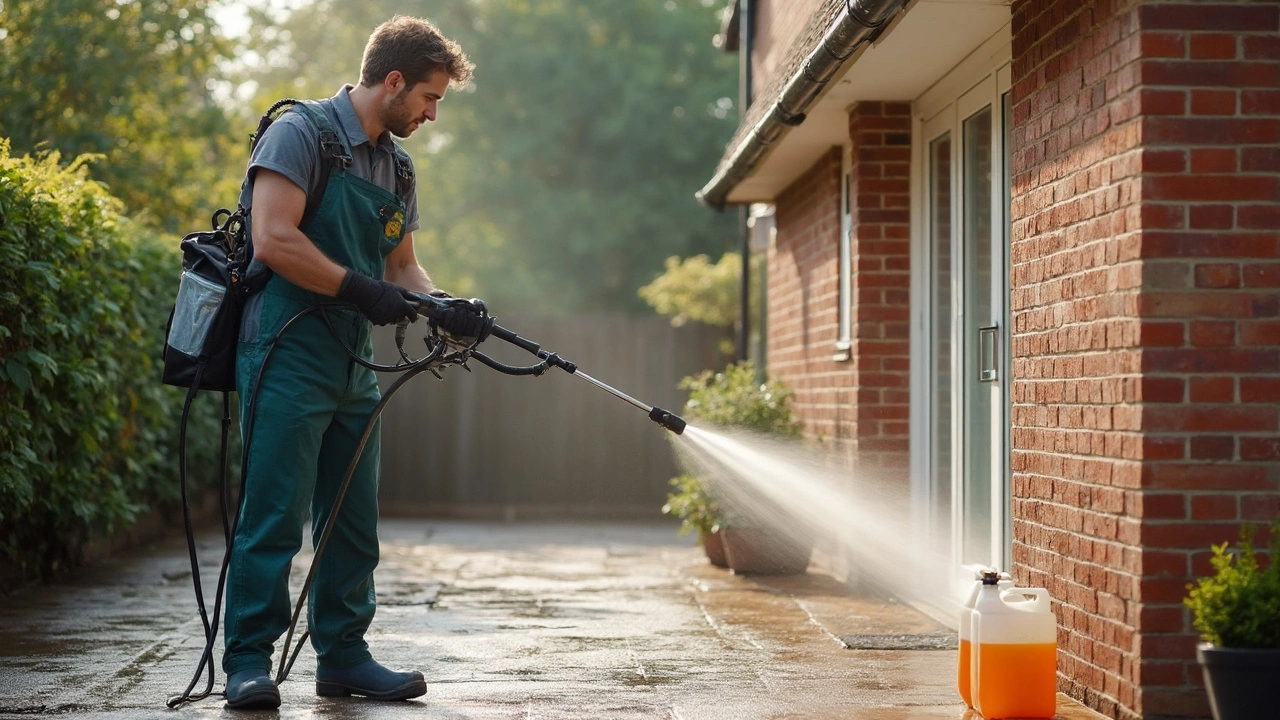Power Washing Equipment: What You Need to Know
If you’re thinking about a power wash, the first step is picking the right gear. The right pressure washer can make a deck sparkle, a driveway look brand new, and a home’s exterior stay protected from grime. It’s not just about power – you also need the right accessories, safety gear, and a plan for keeping the machine in good shape.
Types of Power Washing Equipment
There are three main categories of pressure washers. Electric models are light, quiet, and perfect for small jobs like cleaning windows, garden furniture, or a car. Gas‑powered units push more water, so they’re the go‑to for big decks, concrete driveways, or removing paint. Finally, hot‑water pressure washers heat the water to break down grease and oil – great for commercial kitchens or stubborn oil stains on garage floors.
Beyond the core machine, you’ll want a few essential add‑ons. A spray wand with adjustable nozzles lets you change the water pattern from a gentle fan to a pinpoint jet. A detergent injection kit helps mix cleaning solution directly into the stream, which can cut cleaning time in half. And don’t forget a sturdy hose, a quick‑connect system for swapping accessories, and safety goggles to protect your eyes.
Choosing & Maintaining Your Pressure Washer
When you shop, think about three things: pressure (measured in PSI), flow rate (gallons per minute), and power source. For most home jobs, 1,500–2,000 PSI and 1.5–2.0 GPM is sufficient. If you’re tackling concrete or paint removal, aim for 2,800–3,200 PSI and a higher flow rate.
Budget matters, too. A solid electric unit can cost under £150, while a professional‑grade gas model may run over £1,000. Look for a warranty that covers the pump – it’s the heart of the machine and the part that wears out first.
Maintenance is straightforward. After each use, flush the hose and wand with clean water to prevent clogging. Check the oil level in gas models and change it every 100 hours of operation. Replace the nozzle if the spray pattern looks uneven. Store the washer in a dry place, and cover it to keep dust off.
Safety shouldn’t be an afterthought. Never point the spray at people, pets, or electrical outlets. Start with the lowest pressure setting and work up if needed. Keep a firm grip on the wand and stand on stable ground to avoid slipping.
With the right equipment and a few simple habits, power washing becomes a quick, effective way to keep any surface looking its best. Whether you’re a DIY homeowner or a small‑business owner, the right pressure washer saves time, money, and the hassle of hiring extra help.

Power Wash a House: What the Pros Actually Use
Ever wonder what the pros use to power wash a house? This guide breaks down the exact equipment, soaps, nozzles, and techniques real professionals reach for to get homes spotless and damage-free. You'll find out why pro gear matters, which detergents make the most difference, and tips for safe cleaning on any siding. If you're tackling a big cleaning job or just curious, this article gives you the inside scoop without all the jargon.
Read More